 Misconceptions
Misconceptions  Misconceptions
Misconceptions  Mysteries
Mysteries 10 Strange Unexplained Mysteries of 2025
 Miscellaneous
Miscellaneous 10 of History’s Most Bell-Ringing Finishing Moves
 History
History 10 Great Escapes That Ended Right Back in Captivity
 Weird Stuff
Weird Stuff 10 Fascinating Things You Might Not Know About Spiders
 Food
Food 10 Everyday Foods You Didn’t Know Were Invented by the U.S. Military
 History
History 10 Odd Things Colonial Americans Kept at Home
 Weird Stuff
Weird Stuff 10 Superstitious Beliefs That Once Consumed Entire Cultures
 History
History 10 Bizarre Friendly Fire Incidents in Military History
 Technology
Technology 10 Modern Technologies That Accidentally Imitate Ancient Magic
 Misconceptions
Misconceptions 10 Common Misconceptions About the Victorian Era
 Mysteries
Mysteries 10 Strange Unexplained Mysteries of 2025
 Miscellaneous
Miscellaneous 10 of History’s Most Bell-Ringing Finishing Moves
Who's Behind Listverse?

Jamie Frater
Head Editor
Jamie founded Listverse due to an insatiable desire to share fascinating, obscure, and bizarre facts. He has been a guest speaker on numerous national radio and television stations and is a five time published author.
More About Us History
History 10 Great Escapes That Ended Right Back in Captivity
 Weird Stuff
Weird Stuff 10 Fascinating Things You Might Not Know About Spiders
 Food
Food 10 Everyday Foods You Didn’t Know Were Invented by the U.S. Military
 History
History 10 Odd Things Colonial Americans Kept at Home
 Weird Stuff
Weird Stuff 10 Superstitious Beliefs That Once Consumed Entire Cultures
 History
History 10 Bizarre Friendly Fire Incidents in Military History
 Technology
Technology 10 Modern Technologies That Accidentally Imitate Ancient Magic
Top 10 Human Remains You Can Visit Around The World
There is something equally fascinating and repulsive about human remains. Whether they emerge as part of a murder investigation, an archaeological dig, a horror film, or a Halloween outfit, we connect with the dead human body on a number of different levels for a variety of reasons. What is especially interesting is the way different cultures have treated and preserved human remains across the globe throughout history as well as the different reasons these bodies and body parts are still valued today.
10 Egyptian Mummies
United Kingdom

The ancient Egyptians mummified their royalty, priests, and sometimes even pets so that their bodies and souls could travel safely into the afterlife. But the process was notoriously gory. The vital organs were removed from the body and stored in ceremonial jars, and the brain was pulled out from the nose in pieces.
British interest in ancient Egyptian tombs, where the mummies were kept, rose during the Victorian era and became especially fashionable when Howard Carter and Lord Carnarvon discovered the tomb of Tutankhamen in 1922. Due to the Carter-Carnarvon expedition and the treasure-hunting activities of other wealthy Victorians, the British Museum in London holds the biggest collection of Egyptian antiquities outside of Egypt. This includes two rooms full of mummies, one of which is 5,000 years old, in the Roxie Walker Galleries.
Another key mummy in the museum’s collection is that of the high priestess of the Temple of Amen-Ra, which is said to be cursed. The story emerged after Thomas Douglas Murray purchased the mummy in 1889.
Murray experienced a series of severe misfortunes, including losing his arm and witnessing the deaths of many friends and colleagues who had been in contact with the mummy. Even handlers working for the museum died after touching the mummy’s case. Many also reported unsettling noises and moans coming from the mummy late at night.
Other museums in the UK also have mummies in their collections. Manchester Museum in the North West has 20 human mummies collected by William Matthew Flinders Petrie, who also donated to the British Museum. Egyptian mummies can also be found in the Metropolitan Museum of Art in New York, the Royal Ontario Museum in Toronto, the Louvre Museum in Paris, the Egyptian Museum and Papyrus Collection in Berlin, the Museo Egizio in Turin, and the Egyptian Museum in Cairo.
9 Sokushinbutsu Monks
Japan
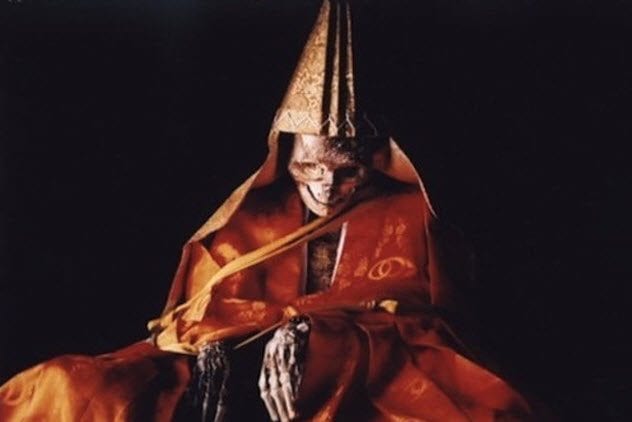
Sokushinbutsu literally means “self-mummification.” It was performed by Buddhist monks between AD 1000 and 1800 in the hope that their preserved bodies would become a gateway between the mortal world and the spirit world. The monk would therefore achieve a higher state of enlightenment.
The process gradually deprived the body of nutrients to reduce the amount of bacteria left over after death. The monk was buried alive under strict temperature restrictions with a continuous air supply so that he could continue breathing and die slowly, leaving his body behind almost completely intact.
Unlike the Egyptian mummies, the sokushinbutsu monks do not have coffins or tombs but are displayed in the open air. Often, their hair, nails, and clothes are preserved. They also remain sitting in the lotus position with their legs crossed, the pose they chose to die in.
They do share a connection with the Egyptian mummies, however. If sokushinbutsu was achieved, the monk’s body would be worshiped as a god figure or living Buddha just as the Egyptians believed that their mummies were bodily representations of the gods on Earth.
Although the act of sokushinbutsu is not explicitly outlined in Buddhist teachings, the practice became popular among monks who wanted to be worshiped after death. In 1877, the Japanese government outlawed sokushinbutsu after it was deemed to be a form of ritualistic suicide, which was already illegal.
The last known attempt at sokushinbutsu was performed by Tetsuryukai, a one-eyed monk whose followers adjusted his death records after sokushinbutsu was confirmed. That way, the date of death would appear before the practice became illegal.
Not all attempts at sokushinbutsu worked, but the successful ones are on display in a number of temples across Japan. Tetsuryukai is available to visit at Nangaku Temple in Central Tsuruoka in northern Japan.
Others are on display at the Dainichi-Boo Temple on Mount Yudono in Dewa Province and the Kaikokuji Temple in Sakata in Yamagata Prefecture. Many monks may also still be buried throughout Yamagata Prefecture. Their bodies would have been abandoned after sokushinbutsu was made illegal.
8 The Sedlec Ossuary
Czech Republic

The Sedlec Ossuary is a church with a difference. All the decorations inside are made of human bone. The church also features at least one of every bone in the human body within a single chandelier, and the entire chapel displays the skeletons of 40,000–70,000 people.
The original church was built in 1400, with the bone decorations added in 1870 by woodcarver Frantisek Rint. Initially, the church was much like any other in the region until King Otakar II of Bohemia sent a member of the Sedlec Cistercian Monastery to the Holy Land on pilgrimage.
While there, he collected a jar of soil, brought it back to the church, and sprinkled it across the cemetery. Sedlec suddenly became the place to be buried for anyone who wanted their remains to be close to holy soil and therefore to God.
With so many people leaving bodies to be buried or reburied in the church, the cemetery became overrun. Bones started to be stored in the cellar or ossuary (“bone store”). Rint was then brought in to help fix the problem.
Rint was employed to organize the bones kept in the chapel basement but was given no further explicit instructions. The bone decorations he created, including a coat of arms for the Schwarzenberg family, have attracted tourists and filmmakers ever since.
Now nicknamed the “Bone Church,” Sedlec Ossuary is one of the oldest sites where you can see human remains arranged artistically and with great skill. You can also see the bodies of over 40,000 people in a space that wouldn’t be able to hold them all if they were living.
The current administration for the ossuary calls the atmosphere “peaceful” and believes the church respects and celebrates the wishes of its dead by allowing their bones to rest near holy soil.
7 Korperwelten (aka Body Worlds)
Germany
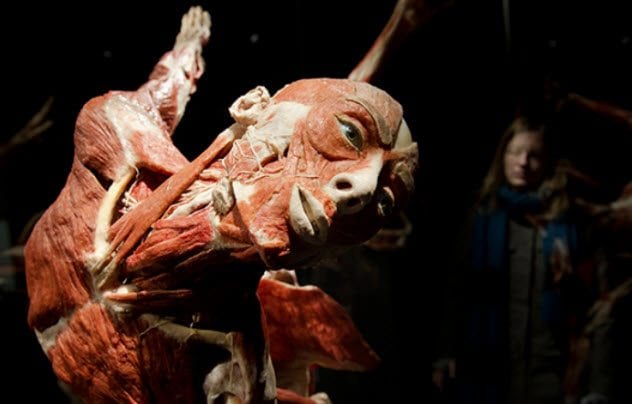
The Body Worlds exhibition is equal parts art, science, and shock factor. This large selection of real human bodies, stripped of their skins and posed in interesting positions like running or performing yoga, shows how the muscles of the body work.
The exhibit has toured all over the world and continues to do so. But the permanent exhibition and laboratory where the bodies are preserved is in Guben in the state of Brandenburg, Germany.
The exhibit was created by Gunther von Hagens following his invention of and experiments with plastination. Using this process, the water and lipids are extracted from human tissue, organs, and body parts and replaced with plastic.
This means that the body part or organ becomes solid so that doctors and medical students can hold and examine it directly. After giving university lectures on the application of plastination in medical studies, von Hagens started performing plastination commercially, creating a touring exhibition that the public could pay to see.
The Body Worlds exhibit has faced considerably controversy over its 20-year life span. Religious leaders, politicians, and members of the general public argued that von Hagens was not showing enough respect to the dead and that the exhibition was immoral.
In response, von Hagens said that all bodies plastinated for the exhibition were donated voluntarily via a program that made it clear how the bodies would be used. There are still over 15,000 people who have agreed to donate their bodies to future exhibits when they die.
According to von Hagens, it costs approximately €70,000 (over $75,000) to plastinate an entire body. A head comes in at €15,000 (just over $16,000), and other organs are around €2,500 (almost $2,700) each, depending on the size and condition.
Despite such large overhead, entrance to the exhibit is reasonably priced at €12 (just under $13) per adult. This means that the future of the Body Worlds exhibit is uncertain because it costs more money than it makes overall.
6 Les Catacombes
France
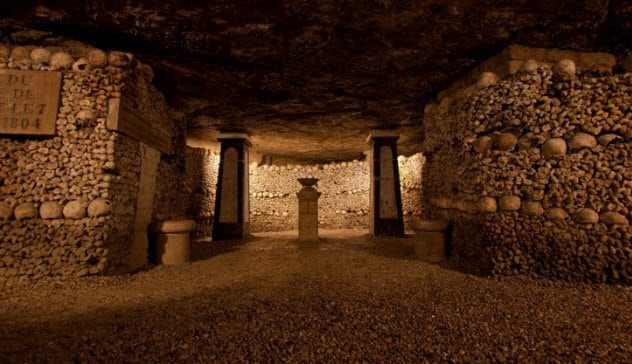
Les Catacombes is a key tourist spot in Paris. It exhibits the bodies and skeletons of people who were formerly buried in the Cemetery of the Innocents near Saint-Eustache in central Paris. People were buried in the cemetery for 1,000 years before it became a health hazard and the bodies had to be relocated.
Six million bodies were moved to Les Catacombes between 1786 and 1860. They are now on display within the 320 kilometers (200 mi) of tunnels and chambers beneath the city, although some of these areas are off-limits to the public.
There are rumors of secret tunnels and entrances into these restricted areas, which have been used illegally by Parisians known as “Cataphiles.” However, these secret places are not advertised to tourists and it is not socially acceptable to look for them.
Due to the creepy atmosphere and darkness of Les Catacombes, it has been subject to a number of conspiracy theories over the years. These include stories that fresh bodies were found within the restricted chambers, that the Gates of Hell are located in the tunnels, and that a recently discovered video shows a man exploring Les Catacombes before being chased away by an unknown ghostly presence.
None of these stories has been properly verified, and many believe them to be hoaxes. But the stories certainly add to the mystery of Les Catacombes, particularly in relation to the restricted areas that only a few lawbreakers get to explore.
5 Tollund Man
Denmark

The Tollund Man is one of the best-preserved bog bodies in the world. Discovered in 1950, the remains were mistaken for those of a recent murder victim because the body had been so well-preserved.
The body was discovered with a rope around its neck, indicating that the man had been killed by hanging. Traces of a final meal of porridge or oats were still in the small intestines.
By examining the Tollund Man’s teeth and skeleton, scientists estimated that he was about 30 years old when he died around 350 BC. When discovered, the remains included the man’s hair and belt. It is assumed that his other clothing rotted away from the acid in the bog water where he was found.
The body was also wearing a pointed sheepskin hat that was tied around the head. Although the entire body measured 162 centimeters (5’4″) long, it is believed that he would have shrunk during his time in the bog. In fact, some of his bones had begun to pierce through the skin in ways that demonstrate the skin getting smaller and therefore putting pressure on the ribs, hips, and shoulders.
Tollund Man’s internal organs—including his brain, stomach, small intestines, lungs, and heart—were all incredibly well-preserved and were eventually removed for further examination by medical staff at the Bispebjerg Hospital in Copenhagen. A particularly well-preserved finger was cut off and later examined by forensic officers in 1976, making it one of the oldest collected fingerprints in the world.
At the time, scientists looking to preserve the Tollund Man were mainly concerned with his head. As a result, his head was removed and preserved through a complex process which slowly replaced the bog water inside the body with beeswax and paraffin.
This protected the head and facial features of the Tollund Man, although the head itself has shrunk slightly since being excavated. The body was allowed to dry out, leaving behind bones rather than flesh. But the skin has since been recreated and is displayed, along with the original head, in the Silkeborg Museum in Denmark.
4 Barts Pathology Museum
United Kingdom
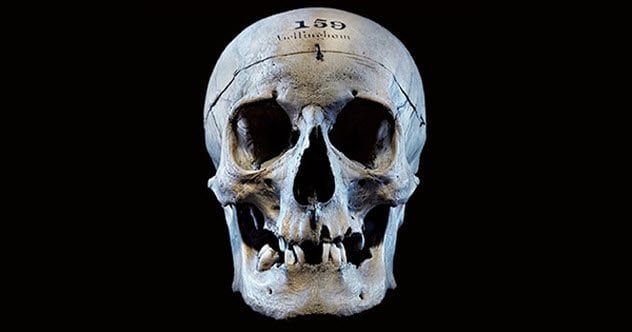
While there are lots of great medical museums around the world, Barts Pathology Museum in London is special because it is only open for special events. These events are often themed.
Past events for Valentine’s Day have included a special display of dissected hearts, and previous Halloweens have seen workshops on edible body parts and suspected vampire bodies. Many of the events encourage and teach visitors to get involved with museum practices themselves, including educational seminars and taxidermy workshops.
Of particular interest, the human remains at Barts are all diseased and were acquired from different points in history. This means that visitors can take a trip back in time and examine what conditions were prevalent in different times and how they were treated.
Many of the bodies and body parts within the museum were acquired through the old judiciary system that punished criminals with execution by hanging and then anatomization. This means that their bodies were cut up and dissected.
The body parts on display include an inguinal hernia from 1750, the bound foot of a Chinese woman from 1862, and the bones of a hanging victim from 1926. Barts also has the skull of John Bellingham, who assassinated the British prime minister and was sentenced to hanging and anatomization in 1812.
In total, the museum houses over 5,000 different specimens. Some of them have yet to be displayed because they are under repair. But conservation work continues so that more of the museum can be showcased to the public.
The museum holds a strict policy toward the dignity of the dead. Barts has published research papers on the most appropriate ways to treat and receive human remains as displays, which puts it in slight opposition to the Body Worlds exhibition.
Barts remains a substantial resource for the medical students and staff of Queen Mary University of London. At the same time, the museum promotes public engagement in the study of medicine, body parts, and the arts through its exhibition and events program.
3 Vladimir Lenin
Russia

Vladimir Lenin was the first leader of Soviet Russia and, upon his request, was embalmed upon his death. His body now lies on public display in a glass coffin in a mausoleum near the Kremlin in Red Square in Moscow. Entrance to view the body is free, and people travel from across the world to see the real face of the man who spread and promoted contemporary communism.
Having been on display since 1924, Lenin’s body is kept preserved and presentable through a strict process of bathing, re-embalming, and temperature control. Originally, there were no plans to keep the body preserved and on display for over 90 years. But when Lenin was lying in state shortly after his death, he attracted such a high number of visitors that the government at the time decided to make him a permanent feature for the public to view.
Lenin’s body has had up to 200 scientists working on its preservation at any one time, although all his internal organs were removed during the initial autopsy. Some of these, including his brain, were examined and are still held in the Neurology Center at the Russian Academy of Sciences.
Scientists working on Lenin’s body and other famous leaders who wished to be embalmed are not allowed to discuss their work or give public interviews. Their tasks are covered under the Russian state secrets act, although this is only true of recent years.
Lenin’s remains are another cause for controversy for many different reasons. The proposed demolition of the museum after the end of the Soviet Union was heavily protested by Lenin supporters who called the action blasphemous.
Others disagree with a site that seems to worship a leader who caused so much damage in Russian history. Whether or not to bury Lenin’s remains and therefore stop the preservation process is an ongoing debate.
2 The Elephant Man
United Kingdom
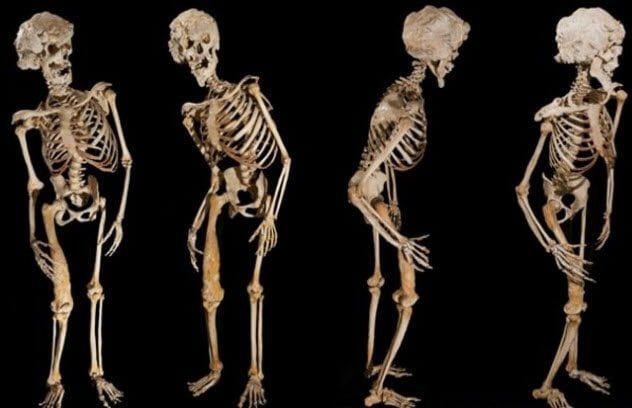
The “Elephant Man” was the popular name for Joseph Merrick, a Victorian man who suffered from Proteus syndrome which distorted his skeleton. He has become something of a legend in British and international culture, with several films and documentaries made about his life, condition, and public treatment at the time.
Merrick spent time in a workhouse, where poor people performed menial jobs in exchange for board and very little money. Then he was picked up by a traveling freak show in 1884.
In this show, he was called the Elephant Man and described as half human and half beast. While this kind of entertainment was socially acceptable and very popular at the time, Merrick was ashamed of his body and did not like the response others gave when looking at him.
Merrick was eventually invited to live at the London Hospital under the care of Dr. Frederick Treves, and a public fund was established to pay for his living costs. This meant that Merrick could be away from public scrutiny and live comfortably while medical professionals studied his condition. Following his death, casts were made of his body, samples were taken from his skin, and his skeleton was preserved and displayed.
Despite rumors that Merrick had requested a Christian burial after scientists were finished examining his remains, the Elephant Man’s body is still on display in a glass case at the Royal London Hospital in Whitechapel. Although the remains are not available for general viewing by the public, any medical student or doctor of medical science may visit the university hospital and view the skeleton.
Pictures of Merrick’s skeleton have also been released to mixed reactions. While doctors and scientists say there is still much to be learned from examining Merrick’s skeleton, others feel that it has been on display long enough and should be granted a proper burial.
1 Albert Einstein’s Brain
United States
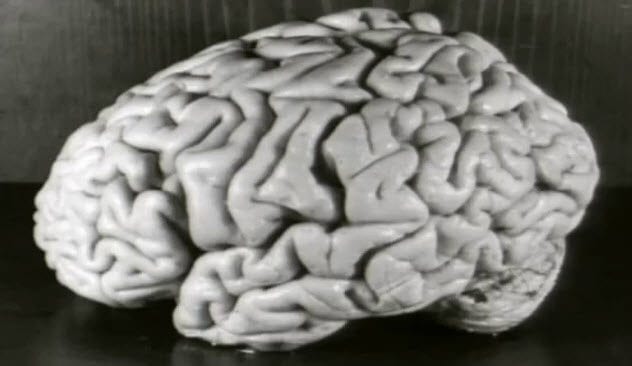
Scientists were interested in examining Albert Einstein’s brain after his death because he was revered as one of the most intelligent people in history. Just before his cremation, his brain was removed by Dr. Thomas Harvey so that it could be tested for evidence of what made Einstein so clever.
Einstein’s son, Hans, was initially angry that his father’s brain had been taken. But Hans later gave permission for experiments to be conducted as part of the search for the source of human intelligence.
However, years went by without experts publishing a scientific analysis of Einstein’s brain. The brain also appeared to have gone missing from Princeton Medical Center.
Later, it was revealed that Einstein’s brain had been cut into 240 pieces, which were separated and mounted onto slides. Then the pieces were sent to the best pathologists and neurologists across the United States.
Remarkably, these scientists, along with Harvey himself, found nothing different about the brain in comparison to those of other human men of the same age. Harvey kept most of the brain in his personal possession, a controversy that resulted in the loss of his career and the breakdown of his marriage.
Later studies conducted by other US scientists in the 1980s indicated that Einstein had more glial cells in his brain than the average person, but it is yet unclear whether this made him intelligent. In the 1990s, it was also discovered that the cells in the front of Einstein’s brain were more densely placed.
Further research conducted in the late 2000s has found significant differences between Einstein’s brain and those of other people. But these studies have been heavily criticized as making claims without enough research on a wide selection of other brain structures.
The pieces of brain that Harvey kept were later given to the University Medical Center of Princeton. However, these pieces are not on public display and can only be accessed by researchers who pass a rigorous screening program. Slices of Einstein’s brain on glass slides are available for public viewing at the Mutter Museum of the College of Physicians in Philadelphia.
Amy is a twentysomething PhD lit student with an interest in the gothic. You can visit her on Twitter.








